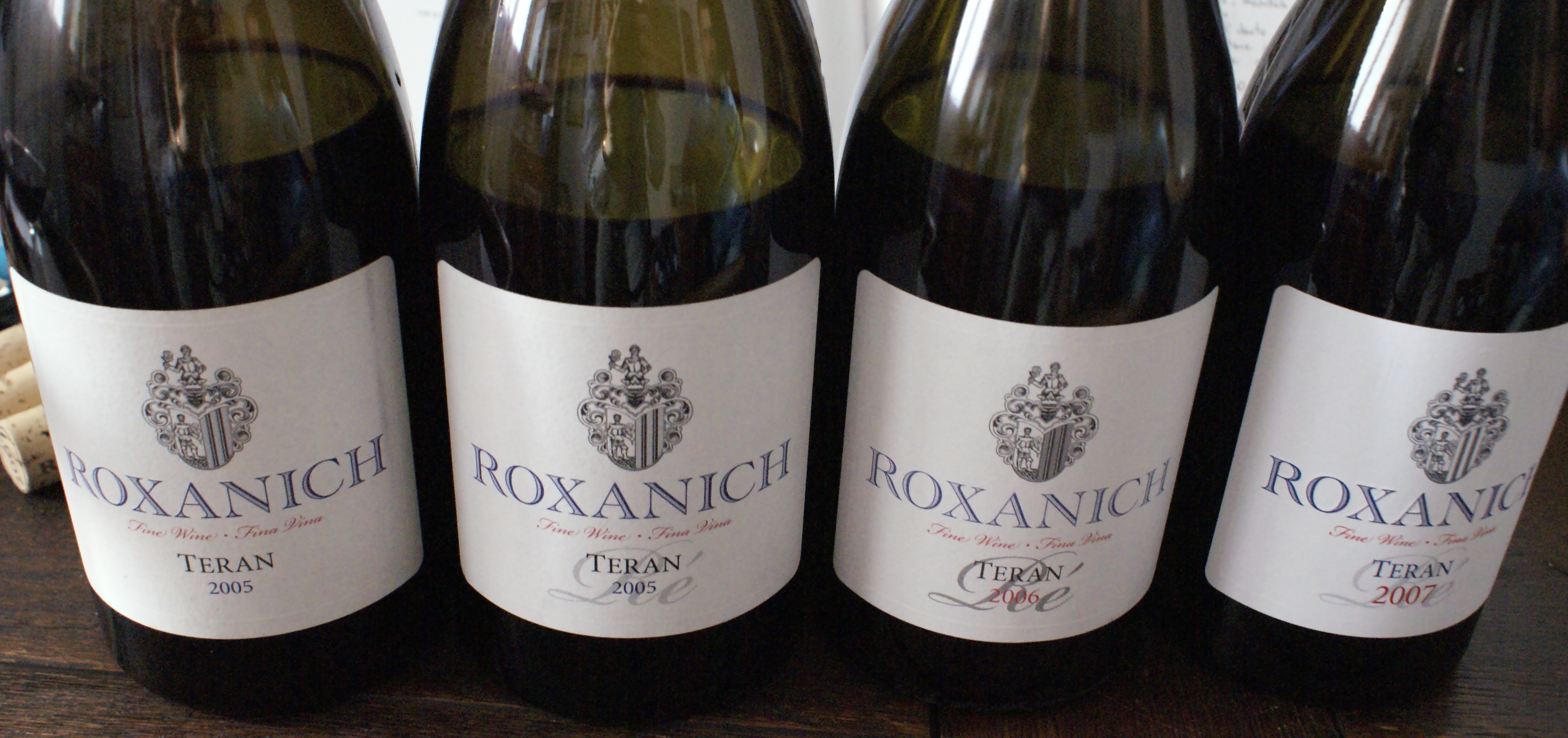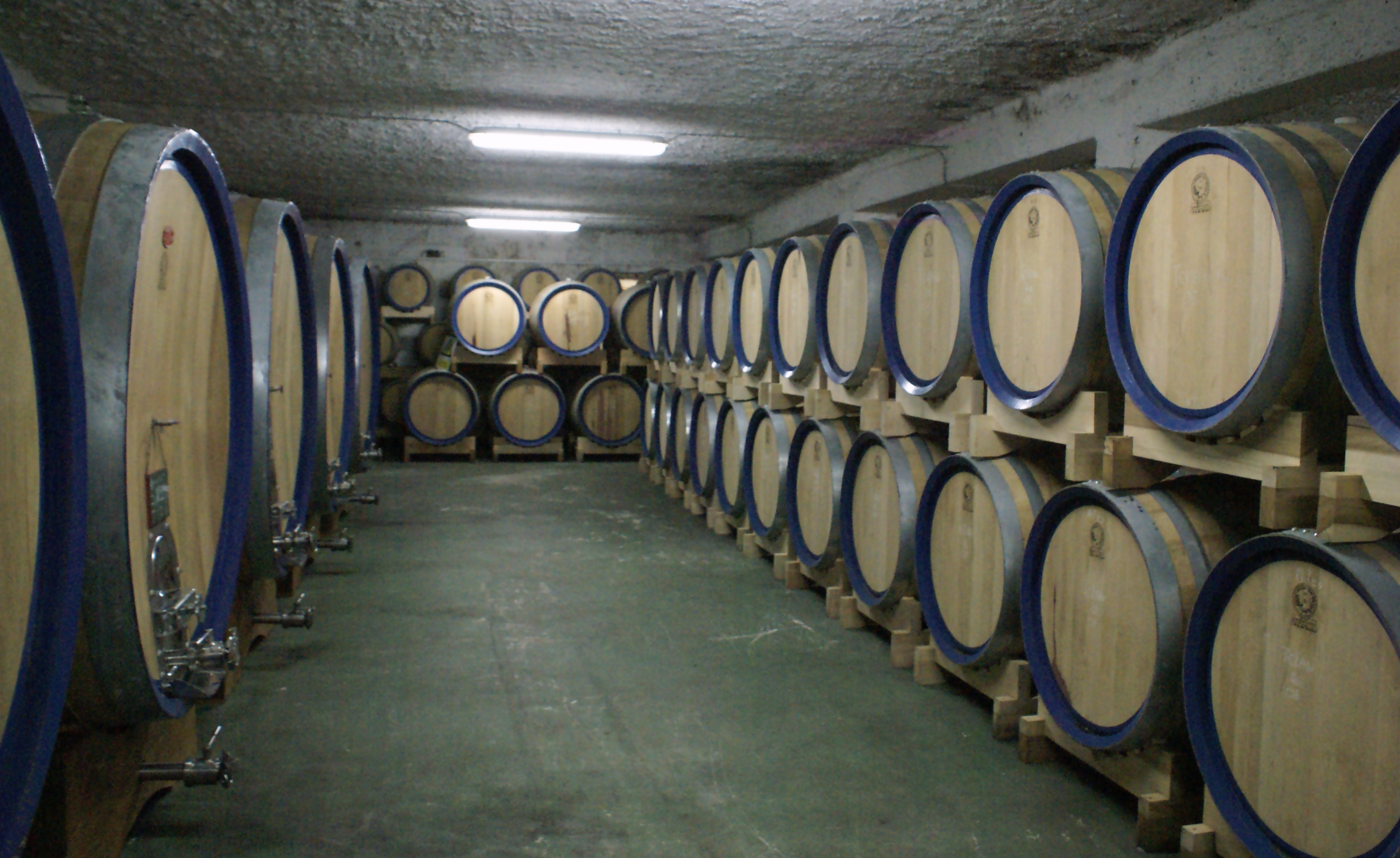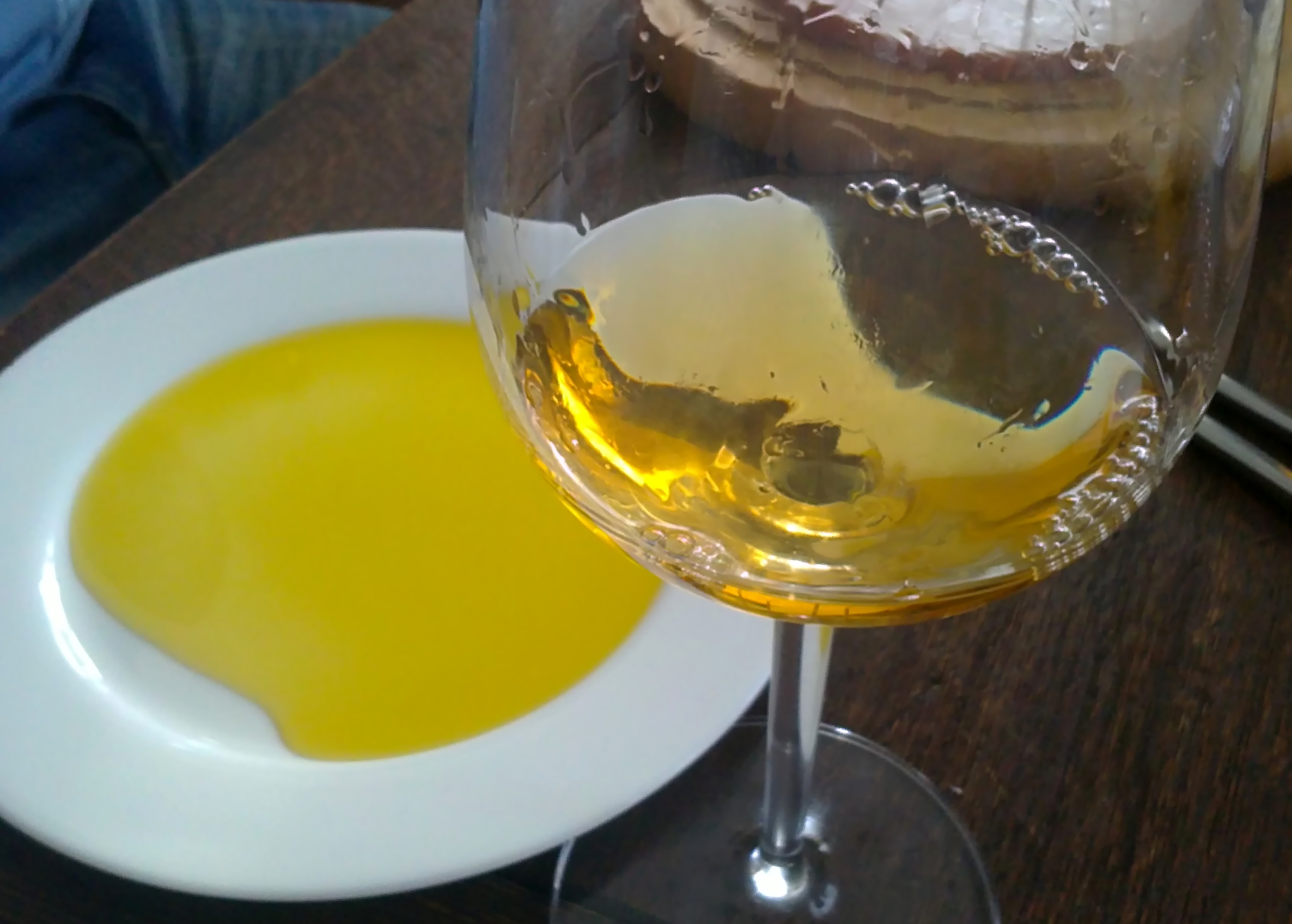Roxanich: incredible complexity
Posted on 25 May 2011
[My Barolo series will resume shortly]
I already told you about the real illumination I felt when tasting the Roxanich 2007 Malvazija at the Zagreb Vino festival last November. Meeting Mladen Rožanić was one of my remarkable experiences of 2010, and so it was an obvious thing to do to call for an appointment at the winery when I visited Istria late last April.
Roxanich, as the winery is called, includes 25 hectares in northern Istria and although the terra rossa soil is as good as that of Trapan further south, the rather plain-looking vineyards here don’t really say much about why Roxanich wines are so exciting. Moreover, Mr. Rožanić is an investor from outside the wine world (he runs a successful engineering company in Zagreb). Usually this doesn’t bode terribly well: such externally funded ‘projects’ usually pursue an anonymous international style and offer little in way of terroir excitement. I’ve seen literally hundreds of such wineries in Italy and would be in difficulty to list five or six that make outstanding wines.
Roxanich, however, is different. These wines are very uncommercial: there is nothing international-styled about them. In fact, they share more than a few characteristics with the current of ‘natural’ wines, which is exactly the opposite of what you’d expect from the winery of an industrial mogul. Mladen Rožanić has entertained his love of wine by travelling widely in France and Italy, and his tastes are surprising and eclectic: in the small private cellar I oversaw there’s no Petrus or Harlan but an interesting collection of wines from the Rhône and Provence as well as vintage port.
This open-mindedness shows in the idiosyncratic vinification here, with reds fermenting in conical wooden vats and then moving into oak that is small as well as large: a bold move by modern standards but these Italian-style botti make a big contribution to the juicy, approachable texture of the wines instead of gluing them up with creamy vanilla. Even more remarkably, the white wines – there’s a Chardonnay and a crazy Ines in White field blend of Riesling Italico, Vermentino, Sauvignon et al. alongside the traditional Istrian Malvazija – see extended skin contact up to several months!
I tasted extensively from barrel: the 2010 whites are very tight at the moment but showing impressive promise, the 2008 Chardonnay had fantastic harmony, the 2008 Pinot Crni (Pinot Noir) was just superb while the 2009 Borgonja really stunned me with its smooth fruit and otherworldly finesse. Looking later at the bottled wines I was impressed by three vintages (2005–2007) of the Teran Ré: in what must be surely one of the leading bottlings of this tricky variety either side of the Italo-Slavic border, the Roxanich Teran reconciles the vegetal and the fruity, the rich and the sober, the raspy and the silky. The 2007 Chardonnay Milva is a tour de force of winemaking with fantastic spicy saffron complexity and presence that transcend the variety’s buttery comfort zone. Another remarkable bottle is the 2008 Rosé: made of Istria’s native Borgonja grape it is vinous, structured, multilayered, young and staggeringly serious for a pink wine.

There are two bottling of the 2005: the Teran Ré is in fact 100% old vine Refošk while the Teran is Teran.
But my heart is with Roxanich’’s Malvazija Antica. Up to 170 days of skin contact and three years in cask make a wine of incredible high relief and saline minerality. Yet there’s nothing aggressive, violently oxidised or heady-alcoholic about this wine: as much as it’s possible to speak about elegance in macerated whites, this wine is the epitome of finesse. Tasted from barrel alongside other wines, the 2010, 2009 and 2008 was the best of each respective vintage. The 2007, now in bottle (it’s the same vintage I tasted back in Zagreb), adds an extra layer of complexity and a relaxed, self-confident whiff of bottle age to all the above.
It’s often difficult to retaste wines that stunned you in the past. If a wine is good, it will always show its qualities but subjective emotion is very difficult to recreate. Roxanich wines did that trick. I was even more excited tasting them this time across the range. They have an incredible dimension and sense of purpose that sets them apart.
Disclosure
My trip to Croatia including flights and accommodation was sponsored by the VinIstra competition where I served as a jury member.





